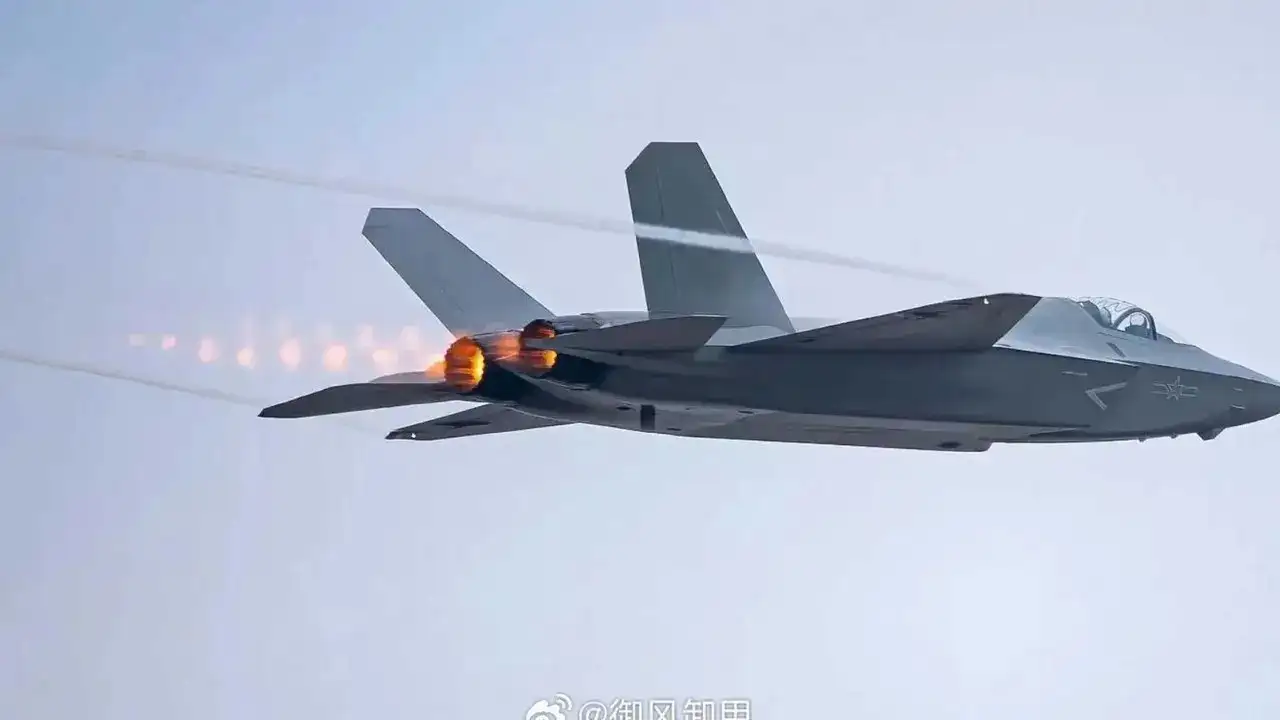By Arun Nair
Copyright timesnownews

China’s J-35 stealth fighter is making waves, demonstrating carrier-based capabilities and advanced stealth that, many military experts say, is at par with the US F-35. The Chinese warplane is reported to have radar cross section (RCS) “smaller than a human palm”, giving it a significant advantage. On the contrary, the $100 million price-tagged F-35 jets are under the spotlight due to frequent crashes and low operational readiness. The details on the J-35 series’ stealth capability, shared by China Central Television (CCTV) News on Sunday, followed the success of China’s first electromagnetic catapult-equipped aircraft carrier, the Fujian, in hosting the first catapult-assisted takeoff and arrested landing training for the J-15T heavy fighter jet, the J-35 stealth fighter jet, and the KJ-600 early warning aircraft. A small radar cross section (RCS) – J-35’s RCS is roughly that of a sparrow – helps the Chinese fighter remain undetected jet until it is very close to its target, giving it more advantages and opportunities in combating, Wang Ya’nan, chief editor of Beijing-based Aerospace Knowledge magazine, told the Global Times. The two medium-thrust engines of the J-35 are completely independently developed by China. While the J-35 is a medium-sized fighter jet, Chinese engineers, through the use of electromagnetic catapult technology, have helped the warplane achieve a maximum takeoff weight of nearly 30 tons means, which makes it almost a heavy fighter jet. This means that the J-35 can take off fully loaded with munitions and fuel, giving it a longer range and endurance and stronger fire power. The J-35 is the carrier-based version of the J-35A, China’s independently developed new-generation multirole stealth fighter jet, the CCTV News reported. The J-35 series has multiple variants, including versions for the navy and the air force. “Many of our research achievements can be applied across different variants, such as sensors, onboard equipment, and avionics systems. This development model has significantly reduced both the costs and time required for fighter jet development,” Wang Yongqing, the chief designer of multiple types of aircraft, told the Global Times in an exclusive interview in June. While other details on the fighter remain unknown, the decision to publicise specific stealth figures is seen as part of Beijing’s messaging strategy. Meanwhile, the J-35’s closest American counterpart, the F-35, has been under intense scrutiny following a series of crashes. According to data compiled by state-run news Turkish agency Anadolu, the jets have been involved in 11 crashes in the last seven years. How J-35 With ‘Palm-Sized’ RCS Compares to the F-35 China’s attempt to present itself as a major player in the space is unlikely to threaten the US’s F-35 program, which is mature, with hundreds of aircraft fielded globally in multiple variants, integrated into allied air forces. The program is on the verge of being upgraded with “80 percent” sixth-generation capabilities. Both the aircraft both feature low-observable shaping and radar-absorbing materials designed to minimise their radar cross-section, as well as an internal weapons bay that preserves stealth while carrying ordnance. There are, however, a number of notable differences. While the J-35 is believed to be a twin-engine aircraft, the F-35 is single-engine but powered by the powerful Pratt & Whitney F135. The radar cross section of the J-35 is roughly the size of a human palm, analysts suggest that F-35’s frontal RCS is roughly the size of a golf ball, or 15cm2. The US firm Lockheed Martin began the development of the fighter jet in 1995 under the Joint Strike Fighter program and 26 years later, its full-rate production started.



